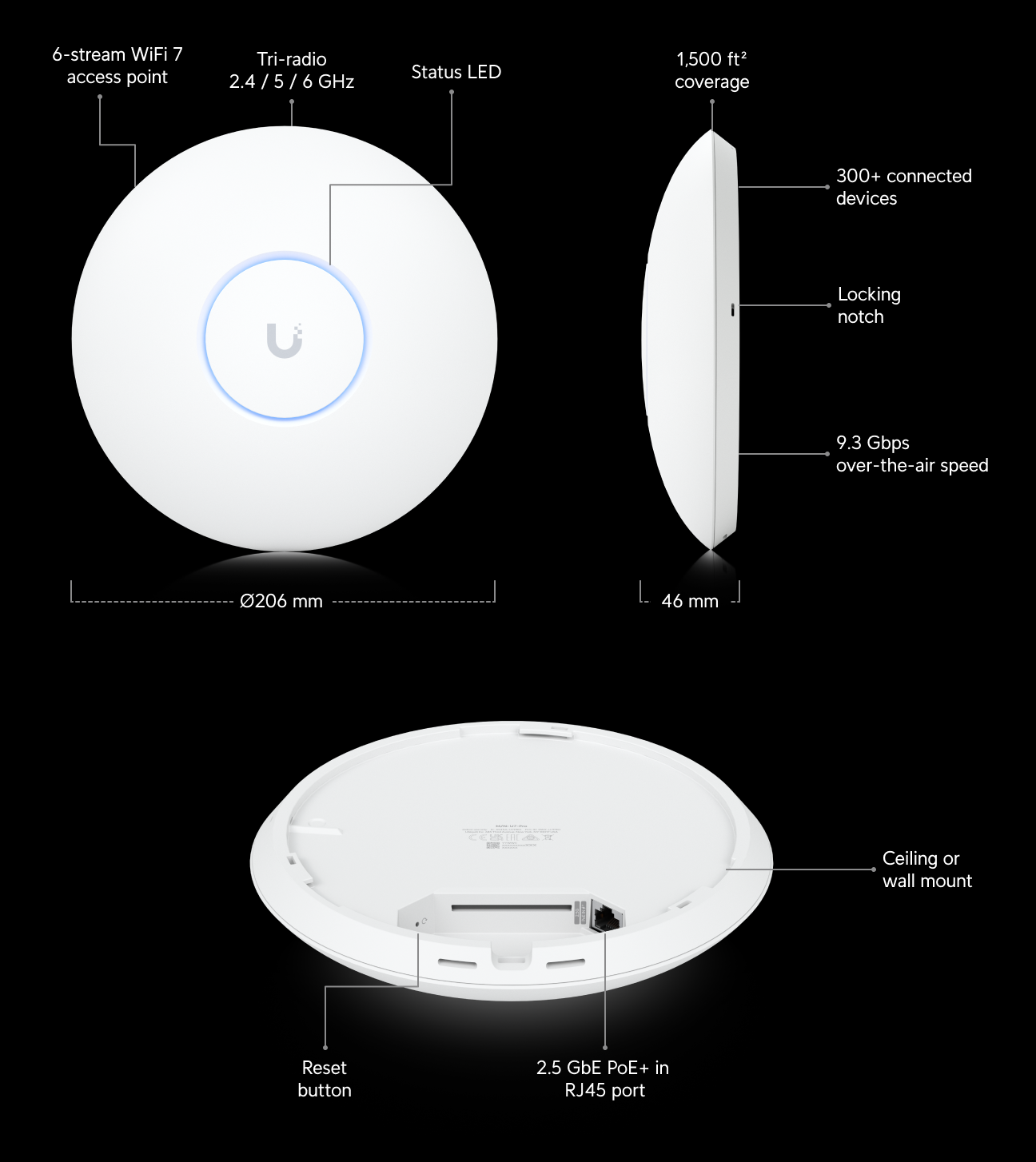WiFi 6 vs WiFi 7: What are the differences?
WiFi 7 or also known as, 802.11be Extremely High Throughput, is the next generation of WiFi technology that is expected to be released some time in 2024. It is still under development, but it promises to offer significant improvements over WiFi 6 and 6E in terms of speed, capacity, and latency.
First, let’s dive in to some of the theoreticals of WiFi 6 and WiFi 7.
WiFi 6 & WiFi 6E
-
WiFi 6/6E has a theoretical speed of 9.6 Gbps.
-
Up to 160 MHz
-
Up to 1024-QAM
-
Up to 8
-
20-40 milliseconds
-
2.4 GHz, 5 GHz (6 GHz WiFi 6E only)
WiFi 7
-
46 Gbps
-
Up to 320 MHz
-
Up to 4096-QAM
-
Up to 16
-
5 milliseconds or less
-
2.4 GHz, 5 GHz, 6 GHz
As you can see, WiFi 7 is a significant upgrade over WiFi 6 in terms of speed, capacity, and latency. It also supports the new 6 GHz frequency band, which offers more channels and less interference.
Here are some of the benefits of WiFi 7:
Faster speeds: WiFi 7 can deliver speeds of up to 46 Gbps, which is more than enough for even the most demanding applications, such as streaming 8K video and online gaming.
More capacity: WiFi 7 can support more devices and traffic than WiFi 6, thanks to its wider channels and higher modulation. This is important for homes and businesses with a lot of connected devices.
Lower latency: WiFi 7 has a latency of 5 milliseconds or less, which is significantly lower than WiFi 6. This is important for real-time applications, such as online gaming and augmented reality/virtual reality (AR/VR).
More reliability: WiFi 7 is more reliable than WiFi 6, thanks to its support for the new 6 GHz frequency band. This is important for businesses and other organizations that need reliable connectivity for their operations.
Overall, WiFi 7 is a significant upgrade over WiFi 6 in terms of speed, capacity, latency, and reliability. It is the ideal choice for homes and businesses that need the best possible WiFi performance.
When should you upgrade to WiFi 7?
If you have a WiFi 6 router and devices, you don't need to upgrade to WiFi 7 right away. WiFi 6 is still a very good WiFi standard, and it will provide good performance for most users.
However, if you are looking for the best possible WiFi performance, or if you have a lot of connected devices, then you should consider upgrading to WiFi 7 when it becomes available.
Here are some reasons why you might want to upgrade to WiFi 7:
You have a lot of connected devices, such as smart home devices, streaming devices, and gaming devices.
You need the fastest possible WiFi speeds for streaming 8K video, online gaming, or other demanding applications.
You need a reliable WiFi connection for your business or other organization.
If you are not sure whether or not you need to upgrade to WiFi 7, you should consult with a networking expert.
As of January 8th, 2024, Ubiquiti has just announced that they are launching their UniFi 7 product line with the new U7 Pro access point. The access point is similar to the U6 Enterprise access point with it’s Tri-radio (2.4/5/6 GHz), 2.5 GbE uplink port, and similar coverage ranges. However, the price tag is only a little bump more than the previous U6 Pro access points which is a great bang for your buck.
The access points are powered by PoE+ making it suitable for many applications without drawing a lot of power from your switch. They’re currently only supported under the Network Application 8.0.26 and newer. If you’re looking for a Ubiquiti switch that can support the 2.5 GbE uplinks check out the new Pro Max series switches or the Enterprise line of switches.
Head on over to the Ubiquiti store and check them out for yourself. As always we’re here to help with any networking questions. Feel free to reach out to us on our contact us page for your next project.


